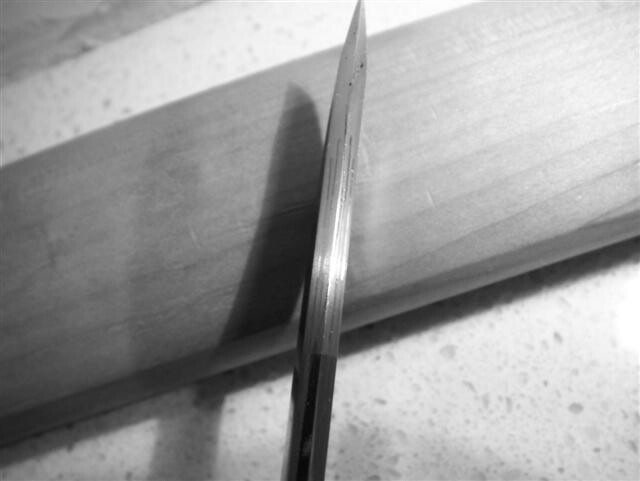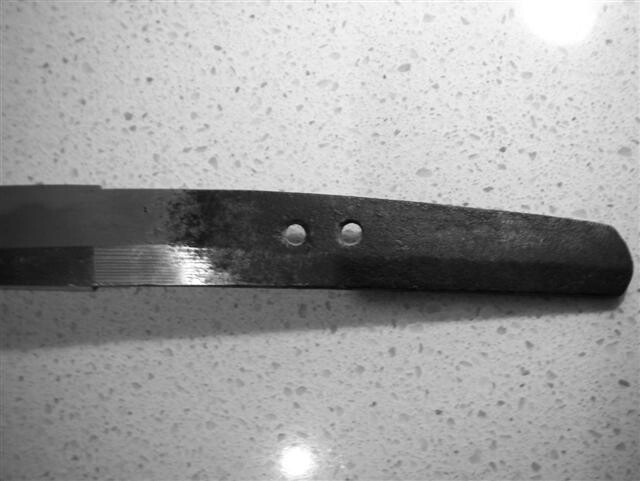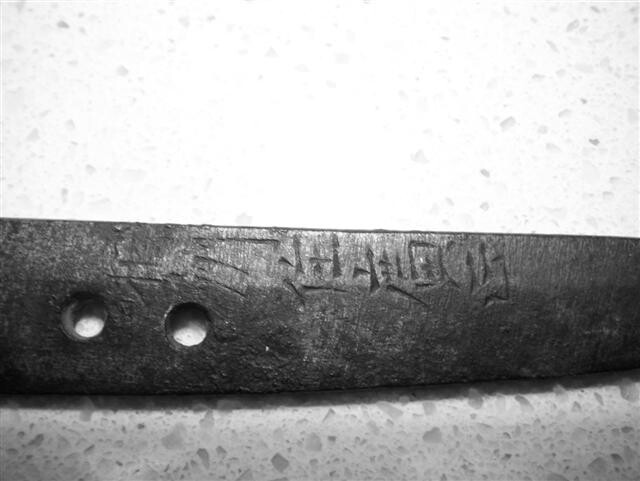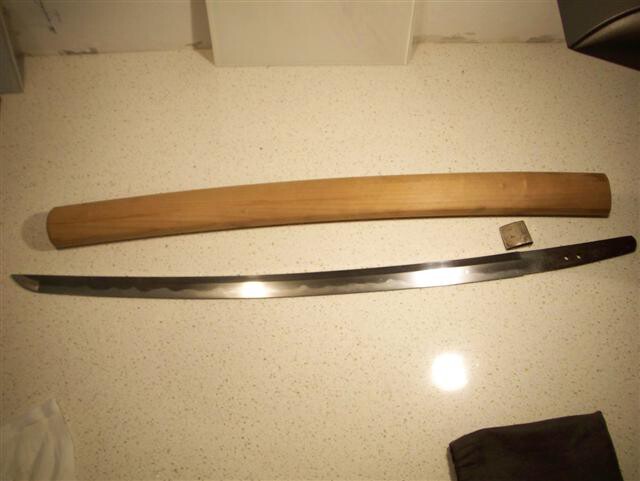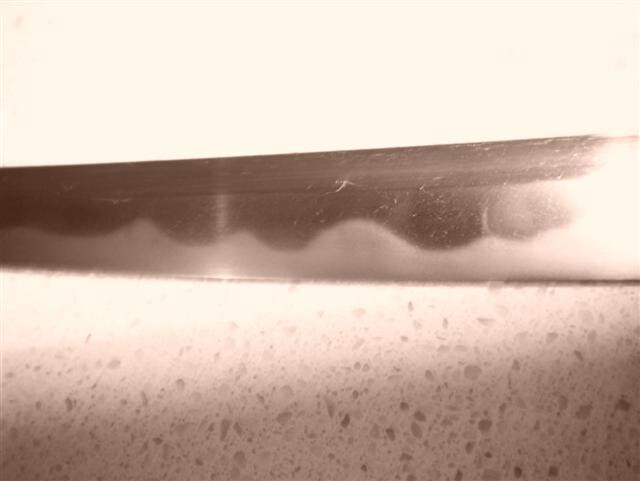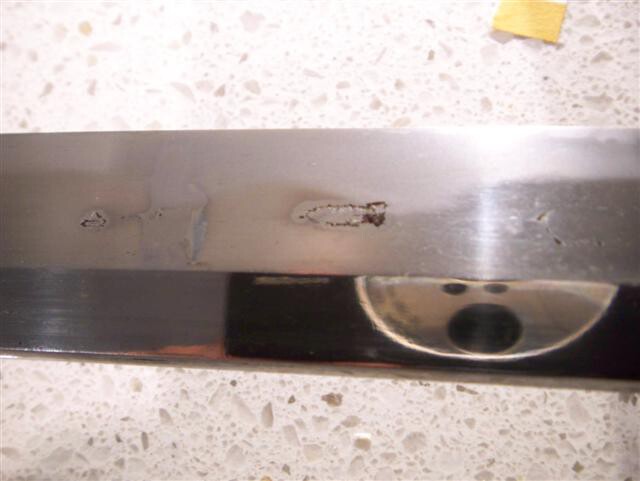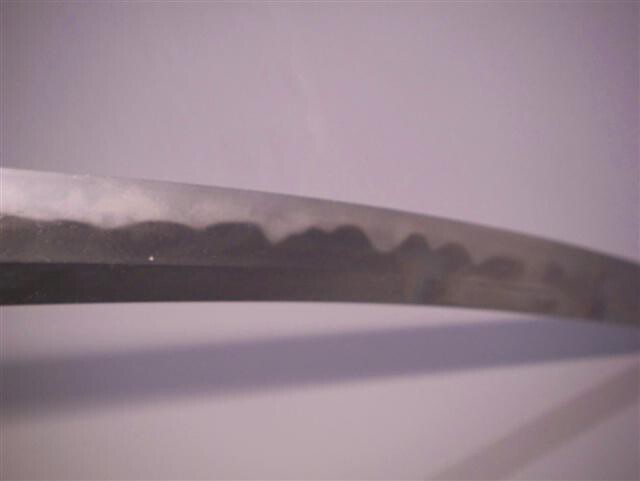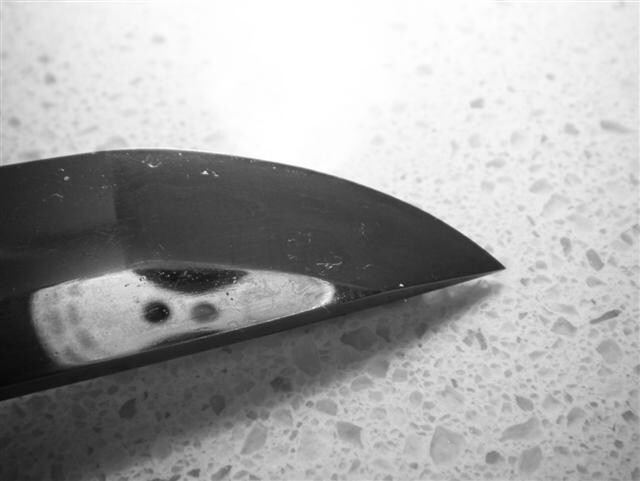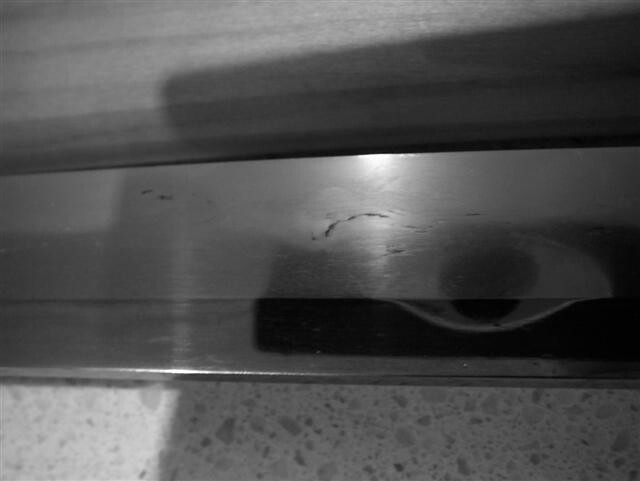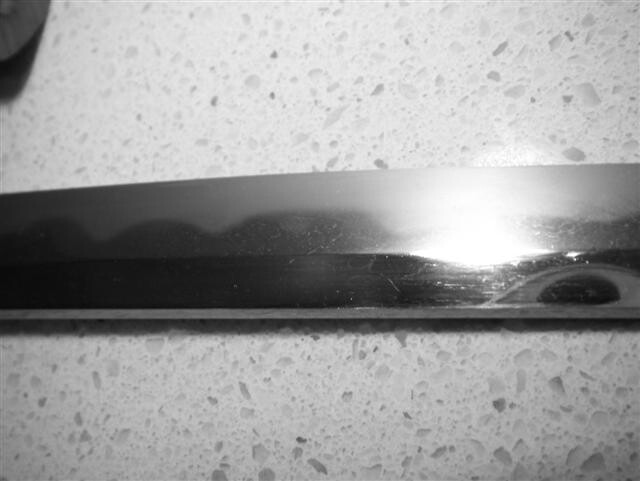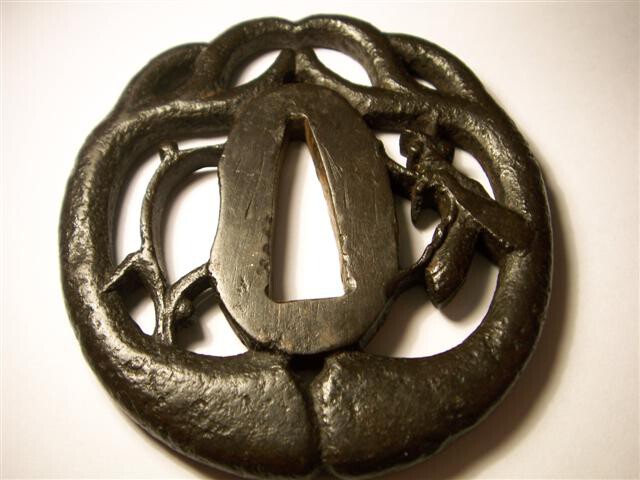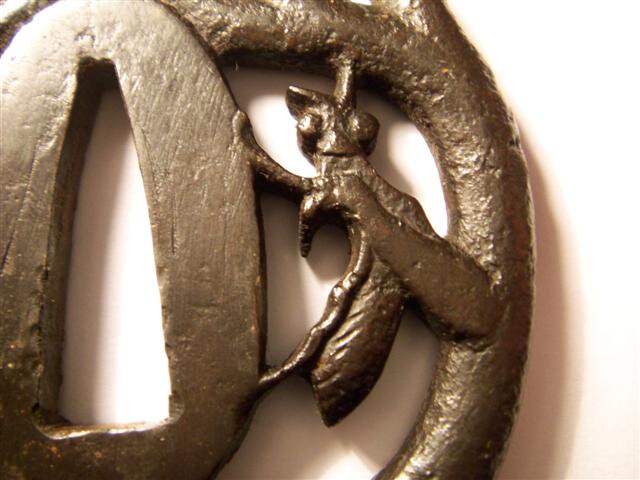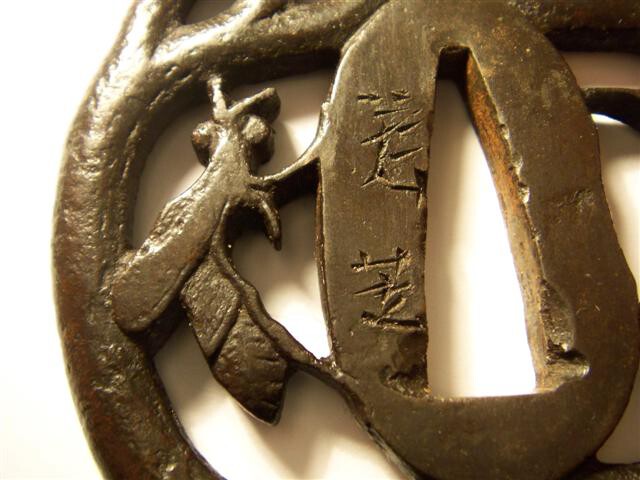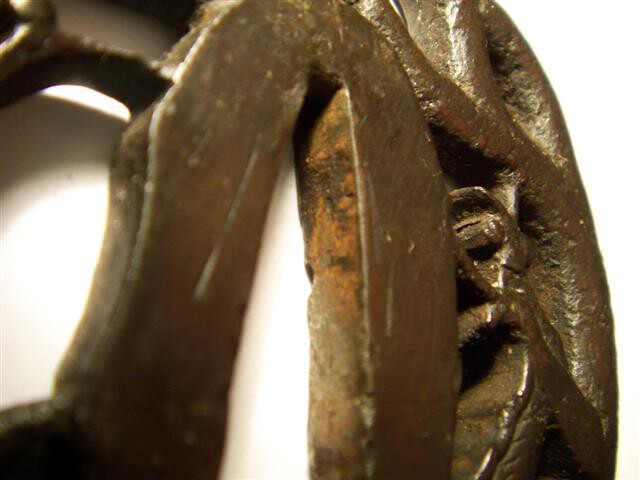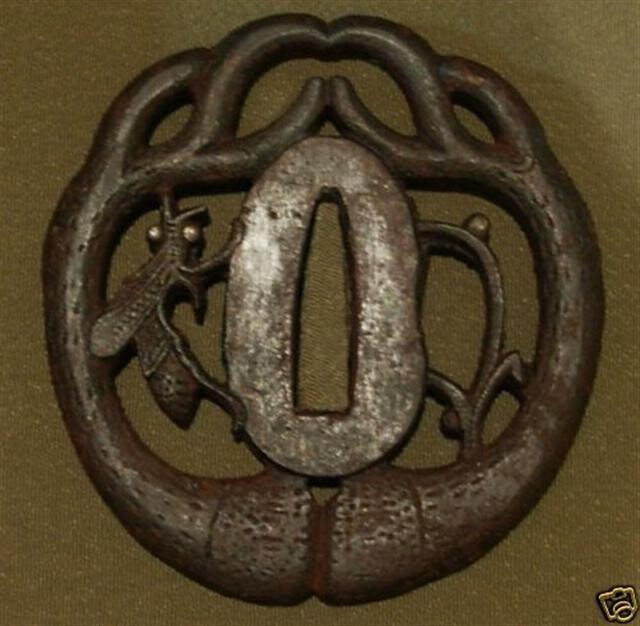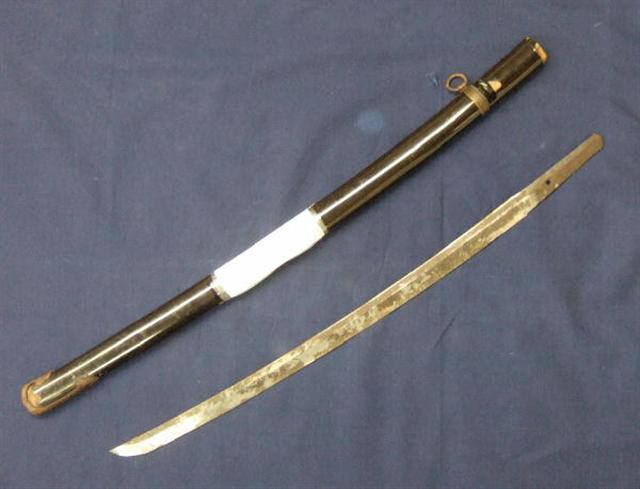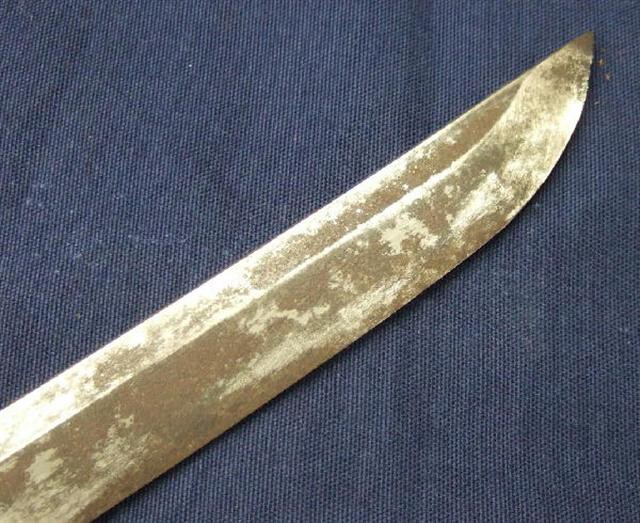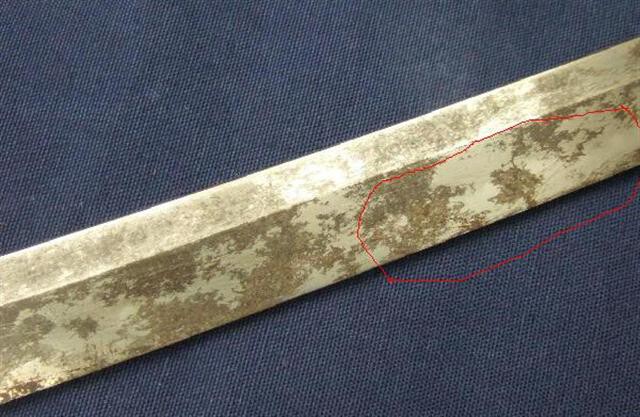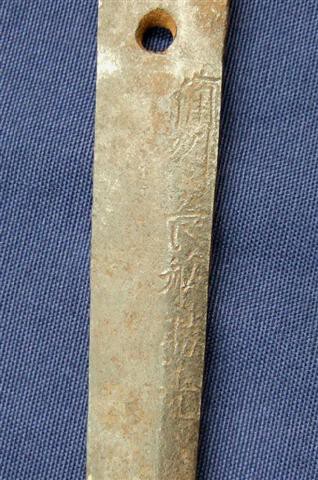
Peter M
Members-
Posts
23 -
Joined
-
Last visited
Content Type
Profiles
Forums
Events
Store
Downloads
Gallery
Everything posted by Peter M
-
Hi Mark, I agree with you. I asked for everyone’s input....got great advice...I did not think that I had ignored anyone. Wait for a sword worth polishing is excellent advice and I am looking. I suppose it is my historical background coming out when I want to get the muromachi uchigatana polished. I think it would be a great waste to continue down the path of leaving it to rust. I have sent out some emails to those polishers that were suggested to get some more ideas. If you have any suggestions for a good buy that warrents a polish let me know Regards Peter
-
Hello all, I would like to thank everyone for their responses on the forum and via PM, it has been really helpful. I have been reading as much on the board as I can ever since I found the forum as it has been a great database of useful and elucidating information and opinions. I feel that I have come a long way from the person who originally purchased the uchigatana with the intention of doing a home polish to one who would never dream of such an event. So you all managed to save one sword at least! This brings me to the question of polishing this sword. I have read and re-read the comments on this forum regarding my sword as well as getting a couple of books and web searches. Everything points to the fact that this is in all likelihood (Jean leans to a ratio of 95%)a bundled sword of little to no commercial value. From reading between the lines on this sensitive issue of polishing through the many posts on this forum, I THINK that I would therefore struggle to get ANY Japanese polishers to even attempt to polish this sword due to its low value. This factor coupled with my non existence polishing contacts, primary school knowledge of the Japanese language and general inexperience in this field makes the process of sending overseas daunting to say the least. Both Mark and Stephen have provided some excellent links to Polishers that from what has been said on this board refuse to polish this sword. I can understand their reasoning behind this as the whole process from what I have read is time consuming and punishing on the joints...why waste it on this sword when they could be spending their time on other swords of more cultural and historical importance. Andrew I would love to know your response to this...do you see this type of low commercial value sword coming through the shop from inside Japan or from outside the country? The link to the sword showing the rust and overall poor state are at the top of the post. Will Send a PM in the next few days. Regarding Sending out of Australia. I have no objection to this and would send it tomorrow if/once I find a polisher to take it with some reasonable fees and timeframe. I will keep sending out those emails. I live In Queensland which as of yet does not have the same restrictive import/export laws as Melbourne when it comes to Nihonto. Regarding the worth of the sword for polishing. The first posts on this sword lead me to the conclusion that I would never purchase another in poor state requiring a polish. My attempt at my second purchase was I THINK even less successful. I Have read and re-read this post to try and detect the undercurrent which is I think is that it too is of little value due. I realised when purchasing that it was of no value due to Flaws BUT did not think that it would be a fake or ShinShinto age wakizashi. I thought I was getting an older wakizashi in polish at a cheaper price because of flaws when I really got a newer flawed wakisashi! Here is the link to the second sword; viewtopic.php?f=9&t=4841&p=37537#p37537 I have got some great information from this post so I will keep watching for more replies. Thanks to everyone Regards Peter M
-
Thanks Justin, I have read enough to know NMB policy on polishing blades and too little to know of the process for getting blades polished from the far corner of the earth which is Australia. I almost made it to the Sydney Shinsa (sp?) which would have made a great start , however work and family commitments clashed. The blade I would like to get polished has been discussed previously on this forum here viewtopic.php?f=3&t=2589&st=0&sk=t&sd=a I realise that it is extremely unlikly that there is a Japanese trained polisher here in Aust that is why I am asking for where the guys here get thier swords polished and the process they use. All PM's would be greatfully recived. Many Thanks Peter M
-
Hello all, I am after some contact details specifically from Australian collectors as to where they get thier swords polished. I realise that this infomation might be "sensitive" however any help in this matter would be greatly appreciated. Thanks Peter McV
-
Opinion wanted on Wakizashi for the Sydney Shinsa
Peter M replied to Peter M's topic in General Nihonto Related Discussion
Hello all, Sorry one more question. Can anybody tell me what style of polish this sword has recived? And just to state my previous question again. Is this sword able to be assigned a school of manufacture and a time of manufacture. Is the signature gimei? Thanks again Peter McV -
Opinion wanted on Wakizashi for the Sydney Shinsa
Peter M replied to Peter M's topic in General Nihonto Related Discussion
Thanks again, Ok so Shinsa is not worth my while. thanks for the input nagamaki. Any ideas on classification or history behind the blade? I realise I am asking a lot and indeed this infomation would cost me the $500 at Shinsa so I promise I will not be disapointed in the lack of replies :D Regards Peter McV -
Opinion wanted on Wakizashi for the Sydney Shinsa
Peter M replied to Peter M's topic in General Nihonto Related Discussion
Thanks for the replys, I must admit that all of the replys went over my head however. What I am taking away from the responces is that this wakizashi is a much later reproduction? I was assuming when I purchased that the blade because it was made during the muromachi period was much less likely to be a forgery due to the proliferation of swords from this historical period. So what do I actually have? Regards Peter McV -
Opinion wanted on Wakizashi for the Sydney Shinsa
Peter M replied to Peter M's topic in General Nihonto Related Discussion
Some more pictures and two more questions. Is the state of polish acceptable. There are polishing marks (lines) on the mune neare the tip and on/under the habaki (collor sp??). does this indicate a resent polish in Japan? The sord was posted from this location so my guess is yes. 2. There are a couple of "hamon dots " on both sides of the blade that I cannot find the terminology for but seem to be present in Soshu swords but in much graeter numbers. Does this mean anything? Once again thatnks for all help. Regards Peter McV -
Hello all, I purchased this Wakizashi a month or two ago from ebay, largely due to a mistake. The auction had an ‘offer’ option so I entered an offer below half of the asking price just so that I could watch the item in my bid page on ebay. I am happy with the sword and have been going through the two books that I possess on the subject to find out more about the history of the sword. I recently contacted Adrian in Sydney Australia regarding the viability of have this sword appraised at the upcoming Shinsa in Sydney. The cost would work out to about $500 AUS with postage etc. So My question is; Given the limited pictures that I am able to provided, would you recommend sending the sword to the Shinsa given the following information; Nakano is signed …. Soushu ju Hiromasa Whole Length about 27.0"(68.7cm), The blade Length about 18.1"(46.2cm) : Carve about 0.4"(1.1cm), : Width(motohaba) about 0.9"(2.4cm), Width(sakihaba) about 0.6"(1.6cm) : Weight about 560g There are a few hada ware and Fukure Yabure near the harmon itself (see pictures) and this alone may make the sword not worth the expenditure in cash or time. I realise that the term “worth it” is subjective but I am after opinions after all. Lastly Nagayama in the Connoisseur’s Book of Japanese Swords lists two Hiromasa’s smiths working in the Soshu traditions, one from 1394-1428 and the second at about 1492-1501 and gives a brief account of the styles for each smith. With my extremely limited knowledge base I am unable to discern between the two if this is at all possible. My readings to date seem to suggest that Wakizashi’s of the Muromachi period were longer than this one in the whole so would this suggest a fake? Basically I am after any more information that you are willing to give me on the sword itself and if it is worth the Shinsa.
-
Can Tsuba be so Similar??
Peter M replied to Peter M's topic in Auctions and Online Sales or Sellers
Thanks all, Sorry I have been away for a few days on holiday. I will pass the news on to the owner regarding the tsuba. On a side note....He also purchaced a Katana while he was in Japan about two months ago. The people he bought it off were reputable and informed him that while the blade was genuine the mei was not. Would it be of any interest to those here to post some pictures of the blade and the fake mei for study/records? If so let me know and I will organise some photos Regards Peter Mcv -
Can Tsuba be so Similar??
Peter M replied to Peter M's topic in Auctions and Online Sales or Sellers
Thanyou Richard, I was amazed at the similarities between the two but now that I have a quick look through eBay and some online pictures I can see what you mean. Any thoughts as to the authenticity of the Tsuba and what the mei reads as? Once again Thanks Peter McV -
Hello all, Would like some comments on a tsuba purchased recently from Australia. I was just trolling through some online listings for tsuba and cam across on which appears to be almost identical. Identical design however some chisel marks may be slightly different. Would like to hear from anyone who cares to comment. Have included four pictures of the Tsuba in my possession and some from the auction. Thanks Peter McV My Pictures Below Ebay Pictures http://cgi.ebay.com/TSUBA-iron-sukashi- ... dZViewItem
-
Hello, Just letting you know that your nihonto auction on eBay is still active here is the link http://cgi.ebay.com/Japanese-sword-Waki ... dZViewItem Regards Peter McV
-
JIRO-ZAEMON-JO-KATSUMITSU?
Peter M replied to Peter M's topic in Auctions and Online Sales or Sellers
Hello al again, Just wanted to ask about polishers located in Australia. If anyone could provide me with a few names and websites/contact details that would be great. Thanks again Peter McVeigh -
JIRO-ZAEMON-JO-KATSUMITSU?
Peter M replied to Peter M's topic in Auctions and Online Sales or Sellers
Thanks again, the penny just droped!!! Jean, When you said early on in this post as well as just now, see if the polisher can "open a window" I assumed you meant open a slot in thier polishing schedule for my blade. Please correct me if I am wrong, you are saying to polish a small part of the blade to see what a full polish could bring. I got there (to my mistake) by the "Window of opportunity†I think I will wait to see what the polisher opinion is before further purchases. Thanks for the advice Jean Stephen I was thinking of a polisher in Brisbane Australia, as I am only an hour south. I have asked to see (via email) if I could drop by in a few weeks to have a look at how he works and hopefully ask a few questions. the link to the site is below http://www.jigokustudios.com/ I dont know of any others in Australia Will use the minerial oil I mentioned earlier in the meantime Thanks Stephen. Thanks again Peter -
JIRO-ZAEMON-JO-KATSUMITSU?
Peter M replied to Peter M's topic in Auctions and Online Sales or Sellers
Thanks again Jean, Still have two questions left for any that want to take a stab at it (my very first online pun :D ) 1. What can I do to preserve the blade prior to polish 2. Given that no real analysis of the blade could be conducted until after the polish should I be hunting for parts to make the blade complete with antique items or should I use new pices manufactured from the polisher or alternate store? Regards Peter -
JIRO-ZAEMON-JO-KATSUMITSU?
Peter M replied to Peter M's topic in Auctions and Online Sales or Sellers
Thanks Jean, Hope you don't mind, if so please let me know, I have used babel to translate from French to English and have posted the discussion here Following an epistolary discussion with Jean, we propose the following text to you, of which the greatest part is of its hand. I thank it for his enlightened participation. In connection with the kazu mono uchi??? They are the productions in great quantity realized during the middle of the period Muromachi (1467-1554), mainly in Bizen but also in other regions. Workshops were founded under the responsibility for a Master blacksmith and employees worked according to the system of Taylorization, before the age of these techniques of production. A great quantity of sabres were thus produced to meet the urgent need out of weapons but also for export to China during this period when Japan entered the era of the civil wars (? Sengoku jidai). The blacksmiths of Osafune in the province of Bizen were the principal producers of kazu mono uchi. The term "Taba gatana" was also employed in a document compiled at the end of the Sengoku period, to qualify these weapons. This term has the same direction that kazu mono uchi, but is not used any more nowadays. The province of Yamato and the town of Seki in Mino also engaged in mass productions. These blades have a quality lower than that of the individually produced?uvres, even if they show characteristics in reference to work of this time in these provinces. It should not be forgotten that in this same excellent space of time?uvres was manufactured, the majority on order (chumon uchi????) or often bearing the personal name of the blacksmith (zoku mei??? ). This period of war is one period transitional which will see disappearing the gokaden in their fundamental characteristics and supremacy from the Mino school which in its diaspora at the end Muromachi/Momoyama will give rise to the Shinto time. With the 16th century, the Japanese blacksmiths mix the traditions, curiously one sees KB denies deki in Bizen with hada which from time to time are in itame, itame nagareru, to see from time to time of Masame. In Soshû, one sees disappearing famous denies it and the appearance of the nioi. Denies also appears in the tradition Mino, return to the source.... The Mino school is probably at that time the precurseur/creator of Taylorism. One does not speak more than one blacksmith, but of a forging mill where blacksmiths are who see themselves allotting each precise task. It is of the Henri Ford before the letter and this way of proceeding brought this judgement on these blades (I interpret a little): in fact blades without genius but reliable do not break, do not twist and cross. The kazu mono uchi are indissociable of Bizen and Mino. For Mino, it is necessary to judge blades in hand, there is of all and not distinctive signature being able to give an indication on the quality of manufacture, like Sukesada, Tadamitsu, Harumitsu in Bizen, there are lines of blacksmith in Mino, Kanemoto, Kanesada, Kanefusa, Ujifusa. The blacksmiths are co-opted by their pars, they return in a school and adopt the name of the founder. Bizen is famous for the signatures such as those: Precision: Kanji? "koku" (note is often read: "kuni" is the named Japanese pronunciation "kun", "koku" is the pronunciation "one" of Chinese extraction). Kazu mono uchi: Bishû Osafune No ju Sukesada saku???????? Bishû Osafune Sukesada?????? These blades from time to time carry also a nengo Precautions: these blades with such signatures are to 90% of Kazu mono uchi but there are exceptions and it is necessary to judge blade in hand, the percentage can decrease if these blades carry a nengo. Blades of quality: These are blades whose signature is long taking again the personal name of the blacksmith, having a nengo: Bizen kuni No ju Osafune Yosozaemon No Jô Sukesada saku?????????????? I draw your attention to the syntax of the beginning of signature of these blades of qualities: ?????? Bizen koku No jû Osafune....... The kanji "Jû? "must always be before Osafune. One could say in French that it is a fault of syntax, but it is the characteristic of the authentic signatures of the blades of Bizen quality. If on a blade sweats Koto Bizen you see syntax: ?????? Bizen koku Osafune jû with the kanji "jû" after Osafune, flee!!!! To 99% it is a gi mei. If known Bizen katana has a throat of time, whatever the signature, it is probable that you deal with blade of quality, even if the mei starts with Bishû Osafune. The niji mei can be good blades, the Tadamitsu line one is accustomed of this style of signature. All the blades whose signature starts with Bizen koku No jû Osafune is not inevitably soshin, it is true but by opposition, all the blades of quality sweats Bizen start with this signature. One of the features of this time is that it saw disappearing the utsuri from the Bizen blades, the utsuri revêt enormously of different forms, it can be in denies, in nioi, diffuse. One cannot bind the disappearance of the utsuri Bizen to the appearance of blade in KB denies deki since the utsuri disappears even from the blades in nioi deki. One regularly finds practically utsuri that in the Tadamitsu line with bô-utsuri. It is probable that the appearance of the kazu mono uchi, of the new processes of production and of a new time gradually brought this disappearance of the utsuri, this one having passed of mode. Characteristics of kazu mono uchi: Suguta: resemble the Oei blades but with a tendency to fray in the higher part (in short, like the blades of the time, that does not help too much) Nagasa: these blades follow the tendency of the moment, they have a nagasa approximately 65 cm at the beginning of the wars Onin, era of the katate uchi, to pass to approximately to 70 cm, with a longer nakago in the years 1520. Hamon: even thing, it follows the tendency of the moment, Koshi No Hiraita, crab grips Hada: it is there that one is ready to see the difference. The blades of quality from time to time have a steel very refined with a very fine ji denies, an impression of velvet. The kazu mono uchi, have, of share employment to the saving in Tamagane, a fine skin which after some polishings reveal the shingane, aspect dull of metal with forgery utsuri, hada being able to be in masame and in general coarse. Boshi: this one is often different on the two sides (but once more it is not obligatory). The general impression emerging from these blades which arrived to us at the present time is that of a quickly made work or blade having suffered much. All judges obviously blade in hand, for memory, it exists a blade "Bishû Osafune Sukesada" Juyo Token... Nevertheless, let us have a little indulgence for these blades bus which can be praised to have seen in France of tens of blades dating from the battle from Marignan In the same way, I wrote this text following an exchange with Jean. He is to be approached like a reflexion and not a truth impossible to circumvent In connection with the utsuri: Sato Kanzan sensei says that the high temperatures of hardening leading to forts denies harm the formation of the utsuri and consequently on the blades in Sôshû den such as that of Hiromitsu, Hiromasa, Fusamune... it could not y have utsuri. This being, before these blacksmiths, the macaw denies are not present even if there is denies in abundance, then why not a utsuri in Soshû, as Kokan Nagayama suggests it, although I do not have of them precise examples at the head. Though it is the blades with very many macaw denies are not famous as the best (I saw a known blade Sôshû D this type with a hagire undoubtedly of with too important constraints at the time of hardening making steel breakable). I believe that it is as well necessary to differentiate the "voluntary" utsuri from those more hazardous such as shirake utsuri. Sato Kanzan sensei says that the blades with a fort denies (while giving for example Sukesada, Katsumitsu or Kiyomitsu) always do not contain a utsuri. It never says. It speaks on the other hand about the importance of the ji denies in this phenomenon. Can be can think itself that the methods of hardening evolved/moved with the use of a different thermal shock leaving a great place with the ji denies. I will tend to think (with all the reserve that that) that should be differentiated ha imposes (container the many ones denies or less) ji, since it is a question of temperatures in this action. It should be remembered that utsuri denies it exists (to contradict the hasty assertions). The examples which I saw showing of denies important in these two zones do not contain the utsuri, with stronger reason nioi utsuri. I am persuaded that the fashion could affected the production of the utsuri in Bizen and a certain way in other schools. The passage of the midare utsuri to the bô utsuri in is undoubtedly an example. The fact of thinking that the forging mill kazu mono uchi is there for something is extremely probable. The influence and the radiation of Soshû den have also to play a part in these way of making with the influence of Sôden Bizen (Motoshige, Chôgi). In addition, it is extremely possible that the texture of the jigane by the kitae intervenes in this phenomenon, a broad kitae will not undoubtedly be less favorable, for example the Omiya school where O hada makes difficult the appearance of a clearly visible utsuri (although existing). In conclusion, I think without being sure for it that one can summarize the things in this manner, by knowing that other parameters intervene: - hamon in nioideki, ji denies fine: utsuri possible (Ichimonji, Yoshii for example) - hamon in niedeki and ji denies average: utsuri possible (Spoke for example) - hamon in niedeki, ji with fort and important ji denies: utsuri rarer (Nobukuni, for example) On the basis of the principle that that is referred more to the size of denies in the ji that with the density, and that the processes of formation of macaw deny carry out to an impossibility. In addition, which one can note it is that the presence of chikei is not at all incompatible with a utsuri (KB Bizen for example). If controlled, the utsuri is not systematic but it present because is wished by the artist. On this subject, there exists a blade of Kanewaka in Kaga with beautiful a utsuri. This blade was forged in order to prove that the absence of utsuri in its works was a choice. Original can be found here in French... I think a registration process is required. http://token.alldiscussion.net/koto-f6/ ... f644cfbc1d Now to "translate" the Nihonto terms Thanks again Jean Regards Peter -
JIRO-ZAEMON-JO-KATSUMITSU?
Peter M replied to Peter M's topic in Auctions and Online Sales or Sellers
Oh yes one more question please I understand that the blade i have purchased is Kazu uchi mono. Is the classification of this blade solely based on the mei or are there any other "give always"? especially in terms of construction. From my uneducated eye the blade itself, were the oxidation is not present, does not show any "grain" hada (?) and appears like a mono steel blade. Question Is the category of Kazu uchi mono ascribed soley on the mei or are there “manufacturing†tell tales as well. And if so what would these be? Thanks Again Peter McVeigh -
JIRO-ZAEMON-JO-KATSUMITSU?
Peter M replied to Peter M's topic in Auctions and Online Sales or Sellers
Hello all, First I would like to extend my thanks to the members off this forum for the above well thought out and informative posts. As I hate to read through posts and finally get to the end only to realise that the story has been left “hanging†so to speak I will post an update. I received the Wakizashi from the eBay seller kofudo_jp on Friday of last week and finally had the chance to have a look a Nihonto in person, a truly inspiring event shall we say. It arrived at my place of employment just before I was to give a lesson on Japanese military expansionism prior to WWII, so I had the chance to show it to a class of really amazed young students. Some students in my class are of Japanese ancestry and I was lucky enough to get an interpretation of the registration documents that came with the piece. I guess I can now claim it on tax!!! I have contacted a Nihonto restorer that is semi local to show the blade to sometime in early march to seek a further opinion on the restoration side of the project. This brings me to my first question. I have read through the following post made here on the topic of separating pieces of Japanese swords for individual sale with the pros and cons viewtopic.php?f=3&t=1681&st=0&sk=t&sd=a&hilit=preservation&start=15 With this post in mind…would it be justifiable to, and I can’t say restore in an archeological sense of the word, to purchase the remaining fittings (from the same approximate era) to bring the sword back to a semi state of originality, or just have the restorer make the new fittings direct. From the prices that the restorer lists for his services I believe the overall price would be roughly the same so the economic argument seems to me to be moot (???). Second question As visible in the pictures from the first posts link the blade has patches of oxidization in parts (perhaps being generous here). Some parts with no rust show the hamon quite well, and you are all going to hate this next sentence. The hamon is “wavy†which is an esthetic bonus for me :D . Anyway question is given the time frame to polish what is the best method of preservation of the blade until the polish can be done. The only thing on hand at the moment is rifle oil I am saddened to say, however I will be getting some medical mineral oil and some isopropyl as another forum has advised for maintenance after the polish has been completed. Any and all input is gratefully accepted Many thanks Peter McVeigh -
Ebay individual kgiersz??
Peter M replied to AndreasU's topic in Auctions and Online Sales or Sellers
Hello, I just tried the contact member link from eBay and it worked for me. Sent him/Her a link to this forum thread Regards Peter M -
JIRO-ZAEMON-JO-KATSUMITSU?
Peter M replied to Peter M's topic in Auctions and Online Sales or Sellers
Hello, Thanks for the replies. After my quick search and with your inputs it would indeed be a bit of a stretch to label the sword smith as JIRO-ZAEMON. I would like to ask a few questions 1. can the mei be translated? If so what is the translation? 2. Given that the OSAFUNE school was a prolific sword producing area, practically in Wakizashi during this mid to late Muromarchi period, would it be too much to at least ascribe the piece to the dates that are listed in the auction? 3. Are there any doubts concerning authenticity? The papers that come with it are, to my limited understanding, just registration papers, however these papers are only issued to Nihonto? Erol thanks for your reply, Any chance you could dig up any information you might have? I know it is a huge ask!!! :D :D :D Jean thanks for your reply. Can I ask for further clarification of your statement; “Few chances to have a museum class sword with mei beginning by "Bishu Osafune ....". do you mean that as the area was prolific the production numbers alone would decrease the value? I will probably have a few more questions as I read through replies so please bear with me. -
Hello all, I am looking to encroach on the good natured and immensely informed people of this forum to make comments on the following Wakizashi I have agreed to purchase from an ebay seller. http://cgi.ebay.com.au/ws/eBayISAPI.dll ... 0206961020 The seller lists it as; “It is minced with "BISHU-OSAFUNE-KATSUMITSU". This sword is a work of the Muromachi period (1392-1491) of Japan. I think that this is work of "JIRO-ZAEMON-JO-KATSUMITSU†I did a search for the JIROZAEMON KATSUMITSU and found the following information from http://www.sho-shin.com/sue2.htm Any and all comments are welcomed and greatly appreciated thanks Peter M

